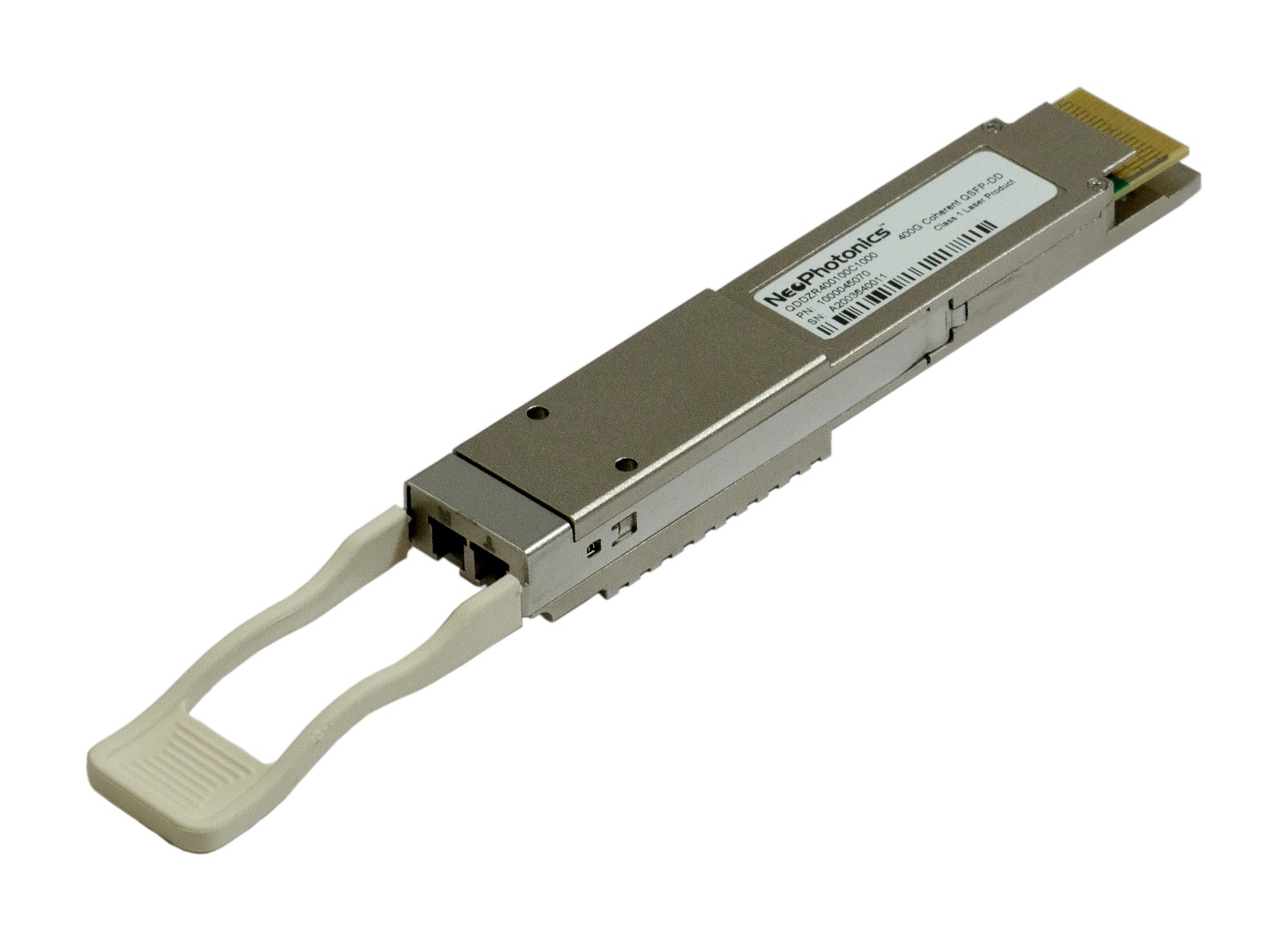NeoPhotonics demos 400 Gbps over 800km

Performance extends applications of small form factor coherent pluggable modules to metro and regional networks
NeoPhotonics, a developer of silicon photonics and hybrid photonic integrated circuit-based lasers, modules and subsystems, has demonstrated that its 400ZR+ QSFP-DD coherent pluggable transceiver can effectively transmit at a 400 Gbps data rate over a distance of 800 km in a 75 GHz-spaced DWDM system with more than 3.5 dB of OSNR margin in the optical signal.
This 400ZR+ coherent pluggable transceiver module is based on NeoPhotonics high performance coherent optics and its ultra-pure color tunable laser, and achieves a reach of 800 km while staying within the power consumption envelop of the QSFP-DD module’s power specification. The company believes these 400ZR+ QSFP-DD modules will find wide application in the Cloud-based Metro 5G networks, and will extend use cases for IP over DWDM into metro-core and regional networks.
This 800 km transmission demonstration was carried out on NeoPhotonics Transmission System Testbed and utilised 75 GHz spaced channels. The QSFP-DD uses NeoPhotonics Silicon Photonics based Coherent Optical Subassembly (COSA) and its ultra-narrow linewidth Nano-ITLA tunable laser.
The longer reach was enabled by the superior performance of these optical components along with a commercial digital signal processor (DSP) using proprietary forward error correction (FEC). The COSA exhibits low insertion loss and low impairments, making efficient use of the optical signal. The Nano-ITLA tunable laser exhibits ultra-low phase noise and low power consumption.
Additionally, these components allow NeoPhotonics 400ZR+ QSFP-DD transceiver module to operate at a case temperature of up to 80 degrees Celsius, which is ten degrees higher than conventional telecom modules, thereby reducing air flow requirements resulting in lower fan speeds and reduced power for cooling in data centres.
NeoPhotonics QSFP-DD modules are in the final stages of qualification and have passed 2000 hours of High Temperature Operating Life (HTOL) and other critical tests per Telcordia requirements. The company expects these modules to be at General Availability (GA) within the second quarter of 2021.
NeoPhotonics 400ZR+ QSFP-DD transceivers are designed to operate in 75 GHz spaced DWDM systems using 64 Channel Arrayed Waveguide Grating MUX and DMUX filters, such as those made by NeoPhotonics. In this case, a fully loaded fibre operating in the C-Band would provide a total of 25.6 Terabits per second (Tbps) capacity. To further maximise the data capacity of optical fibres, NeoPhotonics has developed an enhanced version of its ultra-low noise laser in a C++ LASER module, which has a tuning range of 6 THz, enabling a total fibre capacity of 32 Tbps using 400Gbps transceivers and 75 GHz channel spacing.
“We are excited to extend the operation of our QSFP-DD Coherent transceiver into metro and regional applications in this 400ZR+ configuration,” said Tim Jenks, chairman and CEO of NeoPhotonics.
“Advances in our ultra-pure light tunable laser, our silicon photonics integrated COSA and electronic DSPs have inexorably decreased the size, power and cost of coherent transmission such that a coherent transceiver capable of up to long haul distances can fit in the same form factor as a current generation high density client side pluggable module, such as a QSFP-DD. This has been a sea change for Data centre Interconnect networks, and we believe it will also bring fundamental changes to metro and regional networks,” concludedJenks.



































